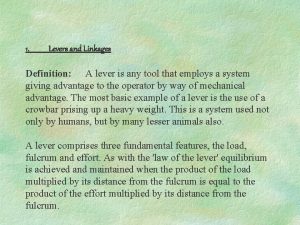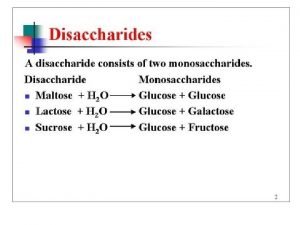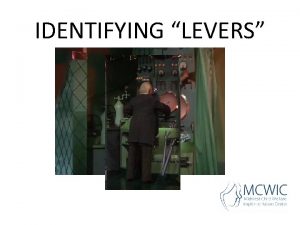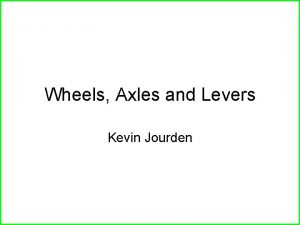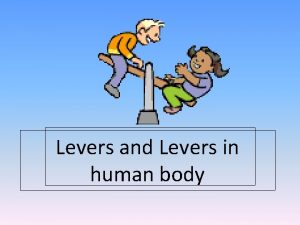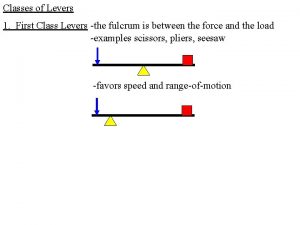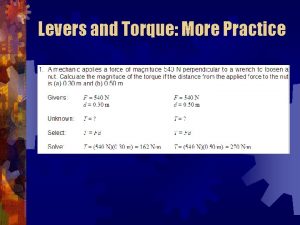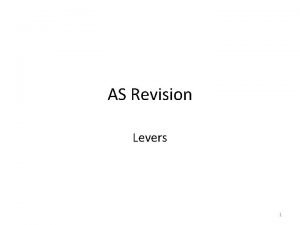Mechanisms Levers Linkages GCSE Graphic Products The principles











- Slides: 11

Mechanisms, Levers & Linkages GCSE Graphic Products

The principles of simple mechanisms Learning Objectives By the end of this lesson you will have developed a knowledge and understanding of: – the principles of simple mechanisms and identify the relevant components and features – levers and linkages.

The principles of simple mechanisms • A mechanism creates movement within a product. • There will be occasions when the graphic designer needs to include a mechanism in a product, whether it be a board game or a moving sign.

Movement Description Linear Moving in one direct Reciprocal / reciprocating Moving back and forth Rotary Turning in a circular motion Oscillating Swinging side to side in alternate directions Diagram

The lever • The lever is the simplest of mechanism. • A lever is a device that pivots around a point called the fulcrum. • When a force is applied to one side, the other side moves in the opposite direction. • By positioning the fulcrum the outputting force can be magnified, or diminished. • The speed and distance of the movement can also be magnified, or diminished. AQA GCSE Design and Technology: graphic products

Types of lever Levers can be categorised as one of three types: Type of lever Description Diagram Product Class 1 The force/effort and the load are on opposite sides of the fulcrum Seesaw Class 2 The load is in between the effort and the fulcrum Wheelbarrow Class 3 The effort is in between the load and the fulcrum Tweezers

Linkages • A linkage can act as a lever. • In most cases it transfers one mechanical motion to another. • A linkage is often used to connect other mechanical devices such as cams to levers or to cranks – or vice versa. • A simple linkage will see a lever attached to a lever.

Types of linkages • Linkage fixed pivots • Linkage brings about change in direction and movement

Types of linkages • Linkage with several moveable parts • Components that can be used for pivots

Key terms • Lever – a rigid bar that can rotate around a fixed pivot called a fulcrum. • Linkage – a mechanism involving two or more levers. • Mechanism – creates movement. • Pivot – a point of rotation.

Task • Make the different types of linkage
 Types of linkages mechanisms
Types of linkages mechanisms Defination of lever
Defination of lever Levers gcse
Levers gcse Evolution graphic organizer
Evolution graphic organizer Non sequitur transition
Non sequitur transition Ghost graphic story graphic and wayfinding
Ghost graphic story graphic and wayfinding Innovative and functional products
Innovative and functional products Pepsi marketing mix
Pepsi marketing mix Principles of graphic devices
Principles of graphic devices Domain 6: community linkages explanation
Domain 6: community linkages explanation Community linkages and professional engagement clipart
Community linkages and professional engagement clipart Disaccharides
Disaccharides

